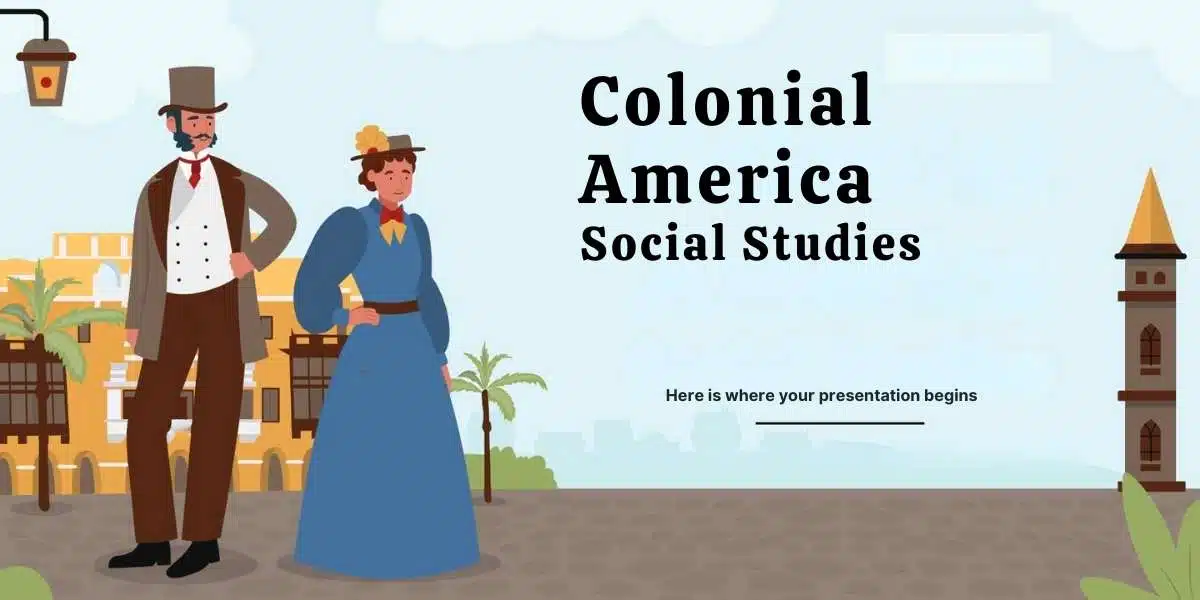To create engaging presentations with social studies images, choose high-quality visuals and incorporate them strategically. Use captions and context for clarity.
Presentations in social studies can be more compelling with the right images. High-quality visuals capture attention and illustrate key points effectively. Images like historical photos, maps, and charts provide context and enhance understanding. Captions and brief descriptions help audience members grasp the significance of each image.
Always ensure that the images are relevant and support the narrative. Engaging visuals make your presentation memorable and informative, helping to convey complex information in an accessible way. Properly sourced and credited images also add credibility to your work. Using visuals strategically can transform a mundane presentation into an interactive and educational experience. Then Social Studies Images
Choosing The Right Images
Creating engaging presentations with social studies images starts with choosing the right images. This step is crucial for capturing the audience’s attention. It also helps in conveying the message effectively. Below are key factors to consider for selecting the best images for your presentation.
Why Social Studies Images Matter
What Social Studies Images Convey About Our Society Images Social Studies Images as branch is and mean history, geography, civil as well as economics among other courses. It helps us to learn the history that was prior to our existence, the contemporary world we are in and the world which is yet to come to pass. The public images in social studies can help educators to see the right SODs aesthetically in and through the curricular and the human vocation, the students and the researchers are also able to develop the right SODs in terms of motifs and information, diversities as well.
Historical Accuracy
Ensuring historical accuracy is essential. Use images from reliable sources. This adds credibility to your presentation.
- Verify the date and context of the image.
- Ensure the image represents the historical period correctly.
- Use images from reputable archives and museums.
Correctly dated images help in maintaining the authenticity of the content. This enhances the educational value of your presentation.
Visual Appeal
Images should be visually appealing. They should attract and hold the audience’s attention. Choose high-resolution images for clarity.
| Aspect | Importance |
|---|---|
| Resolution | High-resolution images are clearer and more engaging. |
| Color | Colorful images are more attractive and interesting. |
| Contrast | Good contrast makes images stand out. |
Use images with good color and contrast. This enhances visual appeal and keeps the audience engaged.
By focusing on historical accuracy and visual appeal, your presentation will be more effective and engaging.
Incorporating Primary Sources
Creating engaging presentations for social studies can be challenging. Incorporating primary sources can significantly enhance the learning experience. Primary sources provide authentic insights and make historical events more tangible. This section will explore ways to use photographs and documents to enrich your presentations. Social Studies Images created.
Photographs
Photographs capture moments in time. They help students visualize historical events. Include images from different eras to show changes over time. Use captions to explain the context of each photo.
- Historical Events: Show key moments like wars, protests, or celebrations.
- Daily Life: Display everyday activities to illustrate life in different periods.
- Portraits: Use photos of influential figures to humanize history.
Interactive elements can make photographs more engaging. Try using tools like image hotspots to highlight specific details.
Documents
Documents provide firsthand accounts of historical events. They include letters, diaries, and official records. Use these to show students different perspectives.
| Type of Document | Example |
|---|---|
| Letters | Soldier’s letter from World War I |
| Diaries | Anne Frank’s Diary |
| Official Records | Declaration of Independence |
Documents can be complex. Break them down into smaller, readable parts. Use bullet points to highlight key information. This makes it easier for students to understand.
Using Infographics
Creating engaging presentations in social studies can be challenging. Infographics offer a powerful way to capture attention and simplify complex data. They combine visuals and text to make information more accessible. Learn how to use infographics effectively in your presentations.
Data Visualization
Infographics help in visualizing data. They turn raw numbers into easy-to-understand visuals. Use bar charts, pie charts, and line graphs to represent data.
- Bar Charts: Show comparisons between different groups.
- Pie Charts: Display proportions of a whole.
- Line Graphs: Track changes over time.
These visual tools make data more engaging. They help students grasp complex information quickly.
Simplifying Complex Ideas
Infographics break down complex ideas into simple visuals. Use icons, images, and short text to explain difficult concepts. This approach makes learning easier and more engaging.
Consider using tables to organize information. Here’s an example:
| Historical Event | Year | Significance |
|---|---|---|
| American Revolution | 1775-1783 | Birth of a new nation |
| French Revolution | 1789-1799 | End of absolute monarchy |
Tables make it easy to compare and contrast events. They enhance understanding and retention of information.
Telling A Story
Creating engaging presentations with social studies images is more than just showing pictures. It’s about telling a story that captivates your audience. Stories make information memorable. They help connect facts to emotions, making learning fun and impactful.
Narrative Techniques
To tell a compelling story, use narrative techniques that bring history to life. Start with a strong opening. Use a hook that grabs attention. For example, begin with a surprising fact or a question.
- Use chronological order to explain events.
- Include personal anecdotes or diary entries from historical figures.
- Describe the setting vividly. Use descriptive words to paint a picture.
Keep your story focused. Avoid adding too many details. Stick to the main events and their significance.
Connecting With The Audience
To make your presentation relatable, connect with the audience. Use images that evoke emotions. Show faces, not just places. People relate to other people more than to objects.
- Ask questions to engage the audience.
- Use images that reflect the audience’s own experiences.
- Share stories that are relevant to current events.
Use body language and eye contact to engage. Speak with enthusiasm. Show your passion for the topic. Your excitement will be contagious.
By telling a story and connecting with your audience, your presentation will leave a lasting impact. Images and stories make learning come alive. They transform facts into a journey through time.
Balancing Text And Images
Creating engaging social studies presentations requires a balance between text and images. This balance ensures the audience stays interested and retains information. Too much text or too many images can overwhelm and confuse viewers. Here, we discuss the strategies for effectively balancing text and images.
Avoiding Overload
Overloading your slides with text and images can confuse your audience. To avoid this, follow these guidelines:
- Limit text to key points. Use bullet points for clarity.
- Use high-quality images that relate directly to the content.
- Maintain white space to give the audience’s eyes a rest.
Consider using a table to organize information:
| Slide Element | Recommendation |
|---|---|
| Text | No more than 6 lines per slide |
| Images | 1-2 relevant images per slide |
Complementing Content
Social Studies Images should complement and enhance your text. Here are some tips:
- Align images with text. Ensure they both convey the same message.
- Use captions to explain the relevance of images.
- Choose diverse images. This includes maps, historical photos, and infographics.
For example, if discussing a historical event, use an image of the event. Add a short caption explaining its significance. This method helps to reinforce the information and keeps the audience engaged.
Interactive Elements
Engaging presentations require interactive elements. These elements can transform a dull presentation into an exciting experience. Clickable maps and quizzes are two powerful tools to achieve this.
Clickable Maps
Clickable maps are excellent for social studies presentations. They allow students to explore different regions interactively. You can embed maps with clickable regions that provide information when clicked.
For example, a map of the United States can have states that, when clicked, show facts about that state. This makes learning more interactive and fun.
- Use Google Maps or other mapping tools.
- Highlight historical events or geographical features.
- Ensure the map is easy to navigate.
Clickable maps can also include links to related videos or articles. This further enriches the learning experience.
Quizzes
Quizzes are another interactive tool that can make presentations engaging. They can be used to test knowledge and reinforce learning.
You can create quizzes with multiple-choice questions, true or false statements, or short answers. Here are some tips:
- Include questions related to the images used in the presentation.
- Use online tools like Kahoot or Quizlet to create interactive quizzes.
- Provide immediate feedback to keep students engaged.
Quizzes can also be used as a tool to encourage participation. They make students think and interact with the content actively.
Incorporating these interactive elements can make your social studies presentations more engaging and effective.
Design Principles
Creating engaging presentations with social studies images requires using effective design principles. These principles help to make your content visually appealing and easy to understand.
Color Schemes
Choosing the right color scheme is crucial for your presentation. Colors can evoke emotions and set the tone. Use a color wheel to select complementary colors.
Here are some tips for choosing color schemes:
- Limit your palette to 3-4 colors.
- Use contrasting colors for text and background.
- Stick to neutral tones for a professional look.
Check out this simple color scheme table:
| Color | Use Case |
|---|---|
| Blue | Trust, Calm |
| Red | Urgency, Passion |
| Green | Growth, Peace |
Typography
Typography plays a vital role in making your presentation readable. Choose clear and legible fonts.
Here are some tips for typography:
- Use a sans-serif font for body text.
- Bold important keywords.
- Keep the font size above 18pt for readability.
Consider these font pairings:
- Header: Arial, Body: Verdana
- Header: Georgia, Body: Tahoma
Maintaining consistency in typography helps keep your presentation professional and engaging.

Credit: slidesgo.com
Engaging Opening And Closing
Creating engaging presentations with social studies images can captivate and educate. An engaging opening and closing are key to keeping your audience interested. Let’s explore how to start and end your presentation effectively.
Captivating Start
A strong opening grabs attention and sets the tone. Begin with a powerful image that relates to your topic. Use a bold headline to make a strong statement. For example:
- Image: A historical event photo.
- Headline: “The Day That Changed History.”
Next, provide a brief, engaging description. Explain why this image is important. Use simple language and keep sentences short. For example:
This photo shows a key moment in history. It changed many lives. Understanding this event helps us learn from the past.
Memorable End
Closing your presentation strongly ensures your message sticks. Use a memorable image that reinforces your main points. Include a concise summary to highlight key takeaways. For example:
- Image: A landmark or significant person.
- Headline: “Remembering Our Heritage.”
Summarize your presentation with a few key points:
- History teaches valuable lessons.
- Images make learning engaging.
- We must remember our past.
End with a call to action. Encourage your audience to explore more. For example:
Discover more about our history. Visit your local museum or library today.

Frequently Asked Questions
How To Make A Presentation Interactive And Engaging?
Use multimedia elements like videos and images. Ask questions to involve the audience. Incorporate live polls and quizzes. Share personal stories and examples. Keep slides simple and visually appealing.
How Do I Make A Presentation With Pictures?
To make a presentation with pictures, use PowerPoint or Google Slides. Import images, arrange them, and add captions. Ensure each slide has a clear purpose. Use high-quality images and maintain consistency in style. Save and review your presentation before sharing.
What Strategies Would You Use To Make The Presentation Engaging?
To make the presentation engaging, use visuals, tell stories, ask questions, and encourage audience interaction. Use clear, concise slides.
How To Properly Use Images In A Presentation?
Use high-quality images that match your content. Keep visuals relevant and avoid clutter. Optimize file size for fast loading. Use captions for clarity. Attribute sources correctly.
Visualizing Complex Concepts
From time lines and geographic maps to cartoons and propaganda posters, social studies images are useful in lowering the conceptual dimensions of information that makes it easier for the learners to understand no matter their age. For instance the use of maps such as that showing the geographical expansion of the Romans can easily capture student’s imagination than just reading a text book.
Fostering Empathy and Understanding
The Social Studies Images give a face to history and also stir people’s emotions as a way of understanding social issues fully. For instance, a picture of a civil rights march or a crisis of refugees will let the students relate to people of other cultures and different epochs.
Conclusion
Creating engaging presentations with social studies images can captivate your audience. Use relevant, high-quality images to enhance your message. Incorporate stories and data to make the content relatable. Engage your audience with interactive elements. Follow these tips, and your presentations will leave a lasting impression.
Start transforming your presentations today! Social Studies Images
Tips for Using Social Studies Images






